- Home
- Stephen King
Night Shift Page 2
Night Shift Read online
Page 2
It is not my business to tell you not to feel guilty, any more than it is my business to justify my novels or the short stories which follow. But an interesting parallel between sex and fear can be observed. As we become capable of having sexual relationships, our interest in those relationships awakens; the interest, unless perverted somehow, tends naturally toward copulation and the continuance of the species. As we become aware of our own unavoidable termination, we become aware of the fear-emotion. And I think that, as copulation tends toward self-preservation, all fear tends toward a comprehension of the final ending.
There is an old fable about seven blind men who grabbed seven different parts of an elephant. One of them thought he had a snake, one of them thought he had a giant palm leaf, one of them thought he was touching a stone pillar. When they got together, they decided they had an elephant.
Fear is the emotion that makes us blind. How many things are we afraid of? We're afraid to turn off the lights when our hands are wet. We're afraid to stick a knife into the toaster to get the stuck English muffin without unplugging it first. We're afraid of what the doctor may tell us when the physical exam is over; when the airplane suddenly takes a great unearthly lurch in midair. We're afraid that the oil may run out, that the good air will run out, the good water, the good life. When the daughter promised to be in by eleven and it's now quarter past twelve and sleet is spatting against the window like dry sand, we sit and pretend to watch Johnny Carson and look occasionally at the mute telephone and we feel the emotion that makes us blind, the emotion that makes a stealthy ruin of the thinking process.
The infant is a fearless creature only until the first time the mother isn't there to pop the nipple into his mouth when he cries. The toddler quickly discovers the blunt and painful truths of the slamming door, the hot burner, the fever that goes with the croup or the measles. Children learn fear quickly; they pick it up off the mother or father's face when the parent comes
into the bathroom and sees them with the bottle of pills or the safety razor.
Fear makes us blind, and we touch each fear with all the avid curiosity of self-interest, trying to make a whole out of a hundred parts, like the blind men with their elephant.
We sense the shape. Children grasp it easily, forget it, and relearn it as adults. The shape is there, and most of us come to realize what it is sooner or later: it is the shape of a body under a sheet. All our fears add up to one great fear, all our fears are part of that great fear--an arm, a leg, a finger, an ear. We're afraid of the body under the sheet. It's our body. And the great appeal of horror fiction through the ages is that it serves as a rehearsal for our own deaths.
The field has never been highly regarded; for a long time the only friends that Poe and Lovecraft had were the French, who have somehow come to an arrangement with both sex and death, an arrangement that Poe and Lovecraft's fellow Americans certainly had no patience with. The Americans were busy building railroads, and Poe and Lovecraft died broke. Tolkien's Middle-Earth fantasy went kicking around for twenty years before it became an aboveground success, and Kurt Vonnegut, whose books so often deal with the death-rehearsal idea, has faced a steady wind of criticism, much of it mounting to hysterical pitch.
It may be because the horror writer always brings bad news: you're going to die, he says; he's telling you to never mind Oral Roberts and his "something good is going to happen to you" because something bad is also going to happen to you, and it may be cancer and it may be a stroke, and it may be a car accident, but it's going to happen. And he takes your hand and he enfolds it in his own, and he takes you into the room and he puts your hands on the shape under the sheet. . . and tells you to touch it here . . . here . . . and here . . .
Of course, the subjects of death and fear are not the horror writer's exclusive province. Plenty of so-called "mainstream" writers have dealt with these themes, and in a variety of different ways--from Fyodor Dostoyevsky's Crime and Punishment to Edward Albee's Who's Afraid of Virginia Woolf? to Ross MacDonald's Lew Archer stories. Fear has always been big. Death has always been big. They are two of the human constants. But only the writer of horror and the supernatural gives the reader such an opportunity for total identification and catharsis. Those working in the genre with even the faintest understanding of what they are doing know that the entire field of horror and the supernatural is a kind of filter screen between the conscious and the subconscious; horror fiction is like a central subway station in the human psyche between the blue line of what we can safely internalize and the red line of what we need to get rid of in some way or another.
When you read horror, you don't really believe what you read. You don't believe in vampires, werewolves, trucks that suddenly start up and drive themselves. The horrors that we all do believe in are of the sort that Dostoyevsky and Albee and MacDonald write about: hate, alienation, growing lovelessly old, tottering out into a hostile world on the unsteady legs of adolescence. We are, in our real everyday worlds, often like the masks of Comedy and Tragedy, grinning on the outside, grimacing on the inside. There's a central switching point somewhere inside, a transformer, maybe, where the wires leading from those two masks connect. And that is the place where the horror story so often hits home.
The horror-story writer is not so different from the Welsh sin-eater, who was supposed to take upon himself the sins of the dear departed by partaking of the dear departed's food. The tale of monstrosity and terror is a basket loosely packed with phobias; when the writer passes by, you take one of his imaginary horrors out of the basket and put one of your real ones in
--at least for a time.
Back in the 1950s there was a tremendous surge of giant bug movies--Them!, The Beginning of the End, The Deadly Mantis, and so on. Almost without fail, as the movie progressed, we found out that these gigantic, ugly mutants were the results of A-bomb tests in New Mexico or on deserted Pacific atolls (and in the more recent Horror of Party Beach, which might have been subtitled Beach Blanket Armageddon; the culprit was nuclear-reactor waste). Taken together, the big-bug movies form an undeniable pattern, an uneasy gestalt of a whole country's terror of the new age that the Manhattan Project had rung in. Later in the fifties there was a cycle of "teen-age" horror movies, beginning with I Was a Teen-Age Werewolf and culminating with such epics as Teen-Agers from Outer Space and The Blob, in which a beardless Steve McQueen battled a sort of Jell-O mutant with the help of his teen-aged friends. In an age when every weekly magazine contained at least one article on the rising tide of juvenile delinquency, the teen-ager fright films expressed a whole country's uneasiness with the youth revolution even then brewing; when you saw Michael Landon turn into a werewolf in a high-school letter jacket, a connection happened between the fantasy on the screen and your own floating anxieties about the nerd in the hot rod that your daughter was dating. To the teen-agers themselves (I was one of them and speak from experience), the monsters spawned in the leased American-International studios gave them a chance to see someone even uglier than they felt themselves to be; what were a few pimples compared to the shambling thing that used to be a high-school kid in I Was a Teen-Age Frankenstein? This same cycle also expressed the teen-agers' own feeling that they were being unfairly put upon and put down by their elders, that their parents just "did not understand." The movies are formulaic (as so much of horror fiction is, written or filmed), and what the formula expresses most clearly is a whole generation's paranoia--a paranoia no doubt caused in part by all the articles their parents were reading. In the films, some terrible, warty horror is menacing Elmville. The kids know, because the flying saucer landed near lovers' lane. In the first reel, the warty horror kills an old man in a pickup truck (the old man was unfailingly played by Elisha Cook, Jr.). In the next three reels, the kids try to convince their elders that the warty horror is indeed slinking around. "Get outta here before I lock you all up for violating the curfew!" Elmville's police chief growls just before the monster slithers down Main Street, laying waste in all d
irections. In the end it is the quick-thinking kids who put an end to the warty horror, and then go off to the local hangout to suck up chocolate malteds and jitterbug to some forgettable tune as the end credits run.
That's three separate opportunities for catharsis in one cycle of movies--not bad for a bunch of low-budget epics that were usually done in under ten days. It didn't happen because the writers and producers and directors of those films wanted it to happen; it happened because the horror tale lives most naturally at that connection point between the conscious and the subconscious, the place where both image and allegory occurs most naturally and with the most devastating effect. There is a direct line of evolution between I Was a Teen-Age Werewolf and Stanley Kubrick's A Clockwork Orange and between Teen-Age Monster and Brian De Palma's film Carrie.
Great horror fiction is almost always allegorical; sometimes the allegory is intended, as in Animal Farm and 1984, and sometimes it just happens--J. R. R. Tolkien swore up and down that the Dark Lord of Mordor was not Hitler in fantasy dress, but the theses and term papers to just that effect go on and on . . . maybe because, as Bob Dylan says, when you got a lot of knives and forks, you gotta cut something.
The works of Edward Albee, of Steinbeck, Camus, Faulkner--they deal with fear and death, sometimes with horror, but usually these mainstream writers deal with it in a more normal, real-life way. Their work is set in the frame of a rational world; they are stories that "could happen." They are on that subway line that runs through the external world. There are other writers--James Joyce, Faulkner again, poets such as T. S. Eliot and Sylvia Plath and Anne Sexton--whose work is set in the land of the symbolic unconsciousness. They are on the subway line running into the internal landscape. But the horror writer is almost always at the terminal joining the two, at least if he is on the mark. When he is at his best we often have that weird sensation of being not quite asleep or awake, when time stretches and skews, when we can hear voices but cannot make out the words or the intent, when the dream seems real and the reality dreamlike.
That is a strange and wonderful terminal. Hill House is there, in that place where the trains run both ways, with its doors that swing sensibly shut; the woman in the room with the yellow wallpaper is there, crawling along the floor with her head pressed against that faint grease mark; the barrow-wights that menaced Frodo and Sam are there; and Pickman's model; the wendigo; Norman Bates and his terrible mother. No waking or dreaming in this terminal, but only the voice of the writer, low and rational, talking about the way the good fabric of things sometimes has a way of unraveling with shocking suddenness. He's telling you that you want to see the car accident, and yes, he's right--you do. There's a dead voice on the phone . . . something behind the walls of the old house that sounds bigger than a rat . . . movement at the foot of the cellar stairs. He wants you to see all of those things, and more; he wants you to put your hands on the shape under the sheet. And you want to put your hands there. Yes.
These are some of the things I feel that the horror story does, but I am firmly convinced that it must do one more thing, this above all others: It must tell a tale that holds the reader or the listener spellbound for a little while, lost in a world that never was, never could be. It must be like the wedding guest that stoppeth one of three. All my life as a writer I have been committed to the idea that in fiction the story value holds dominance over every other facet of the writer's craft; characterization, theme, mood, none of those things is anything if the story is dull. And if the story does hold you, all else can be forgiven. My favorite line to that effect came from the pen of Edgar Rice Burroughs, no one's candidate for Great World Writer, but a man who understood story values completely. On page one of The Land That Time Forgot, the narrator finds a manuscript in a bottle; the rest of the novel is the presentation of that manuscript. The narrator says, "Read one page, and I will be forgotten." It's a pledge that Burroughs makes good on--many writers with talents greater than his have not.
In fine, gentle reader, here is a truth that makes the strongest writer gnash his teeth: with the exception of three small groups of people, no one reads a writer's preface. The exceptions are: one, the writer's close family (usually his wife and his mother); two, the writer's accredited representative (and the editorial people and assorted munchkins), whose chief interest is to find out if anyone has been libeled in the course of the writer's wanderings; and three, those people who have had a hand in helping the writer on his way. These are the people who want to know whether or not the writer's head has gotten so big that he has managed to forget that he didn't do it by himself.
Other readers are apt to feel, with perfect justification, that the author's preface is a gross imposition, a multi-page commercial for himself, even more offensive than the cigarette ads that have proliferated in the center section of the paperback books. Most readers come to see the show, not to watch the stage manager take bows in front of the footlights. Again, with perfect justification.
I'm leaving now. The show is going to start soon. We're going to go into that room and touch the shape under the sheet. But before I leave, I want to take just two or three more minutes of your time to thank some people from each of the three groups above--and from a fourth. Bear with me as I say a few thank-you's:
To my wife, Tabitha, my best and most trenchant critic. When she feels the work is good, she says so; when she feels I've put my foot in it, she sets me on my ass as kindly and lovingly as possible. To my kids, Naomi, Joe, and Owen, who have been very understanding about their father's peculiar doings in the downstairs room. And to my mother, who died in 1973, and to whom this book is dedicated. Her encouragement was steady and unwavering, she always seemed able to find forty or fifty cents for the obligatory stamped, self-addressed return envelope, and no one--including myself--was more pleased than she when I "broke through."
In that second group, particular thanks are due my editor, William G. Thompson of Doubleday & Company, who has worked with me patiently, who has suffered my daily phone calls with constant good cheer, and who showed kindness to a young writer with no credentials some years ago, and who has stuck with that writer since then.
In the third group are the people who first bought my work: Mr. Robert A. W. Lowndes, who purchased the first two stories I ever sold; Mr. Douglas Allen and Mr. Nye Willden of the Dugent Publishing Corporation, who bought so many of the ones that followed for Cavalier and Gent, back in the scuffling days when the checks sometimes came just in time to avoid what the power companies euphemistically call "an interruption in service"; to Elaine Geiger and Herbert Schnall and Carolyn Stromberg of the New American Library; to Gerard Van der Leun of Penthouse and Harris Deinstfrey of Cosmopolitan. Thanks to all of you.
There's one final group that I'd like to thank, and that is each and every reader who ever unlimbered his or her wallet to buy something that I wrote. In a great many ways, this is your book because it sure never would have happened without you. So thanks.
Where I am, it's still dark and raining. We've got a fine night for it. There's something I want to show you, something I want you to touch. It's in a room not far from here--in fact, it's almost as close as the next page.
Shall we go?
Bridgton, Maine February 27, 1977
JERUSALEM'S LOT
Oct. 2, 1850.
DEAR BONES,
How good it was to step into the cold, draughty hall here at Chapelwaite, every bone in an ache from that abominable coach, in need of instant relief from my distended bladder--and to see a letter addressed in your own inimitable scrawl propped on the obscene little cherry-wood table beside the door! Be assured that I set to deciphering it as soon as the needs of the body were attended to (in a coldly ornate downstairs bathroom where I could see my breath rising before my eyes).
I'm glad to hear that you are recovered from the miasma that has so long set in your lungs, although I assure you that I do sympathize with the moral dilemma the cure has affected you with. An ailing abolitionist healed
by the sunny climes of slave-struck Florida! Still and all, Bones, I ask you as a friend who has also walked in the valley of the shadow, to take all care of yourself and venture not back to Massachusetts until your body gives you leave. Your fine mind and incisive pen cannot serve us if you are clay, and if the Southern zone is a healing one, is there not poetic justice in that?
Yes, the house is quite as fine as I had been led to believe by my cousin's executors, but rather more sinister. It sits atop a huge and jutting point of land perhaps three miles north of Falmouth and nine miles north of Portland. Behind it are some four acres of grounds, gone back to the wild in the most formidable manner imaginable--junipers, scrub vines, bushes, and various forms of creeper climb wildly over the picturesque stone walls that separate the estate from the town domain. Awful imitations of Greek statuary peer blindly through the wrack from atop various hillocks--they seem, in most cases, about to lunge at the passer-by. My cousin Stephen's tastes seem to have run the gamut from the unacceptable to the downright horrific. There is an odd little summer house which has been nearly buried in scarlet sumac and a grotesque sundial in the midst of what must once have been a garden. It adds the final lunatic touch.
But the view from the parlour more than excuses this; I command a dizzying view of the rocks at the foot of Chapelwaite Head and the Atlantic itself. A huge, bellied bay window looks out on this, and a huge, toadlike secretary stands beside it. It will do nicely for the start of that novel which I have talked of so long [and no doubt tiresomely].

 The Stand
The Stand The Shining
The Shining It
It The Dead Zone
The Dead Zone The Dark Tower
The Dark Tower The Gunslinger
The Gunslinger Song of Susannah
Song of Susannah Under the Dome
Under the Dome The Mist
The Mist Revival
Revival Misery
Misery Mile 81
Mile 81 From a Buick 8
From a Buick 8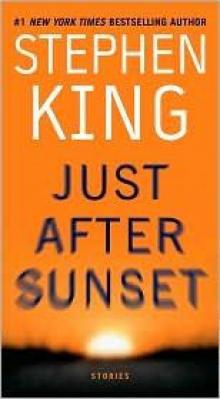 Just After Sunset
Just After Sunset Black House
Black House Doctor Sleep
Doctor Sleep The Drawing of the Three
The Drawing of the Three Wizard and Glass
Wizard and Glass Dolores Claiborne
Dolores Claiborne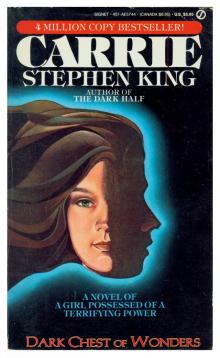 Carrie
Carrie The Little Sisters of Eluria
The Little Sisters of Eluria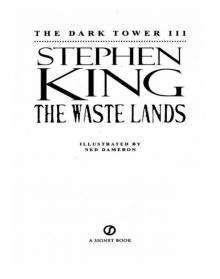 The Waste Lands
The Waste Lands The Green Mile
The Green Mile The Girl Who Loved Tom Gordon
The Girl Who Loved Tom Gordon Cujo
Cujo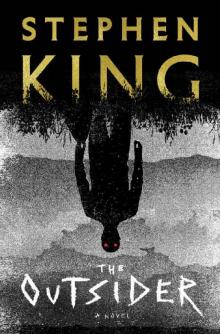 The Outsider_A Novel
The Outsider_A Novel The Tommyknockers
The Tommyknockers Cell
Cell Pet Sematary
Pet Sematary The Talisman
The Talisman Four Past Midnight
Four Past Midnight Different Seasons
Different Seasons Needful Things
Needful Things Nightmares and Dreamscapes
Nightmares and Dreamscapes Christine
Christine The Running Man
The Running Man The Eyes of the Dragon
The Eyes of the Dragon 11/22/63
11/22/63 Firestarter
Firestarter Insomnia
Insomnia Finders Keepers
Finders Keepers Gerald's Game
Gerald's Game The Wind Through the Keyhole
The Wind Through the Keyhole Hearts in Atlantis
Hearts in Atlantis Danse Macabre
Danse Macabre Thinner
Thinner Duma Key
Duma Key The Bachman Books
The Bachman Books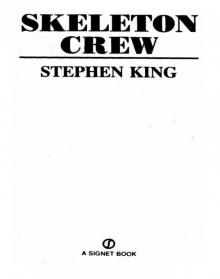 Skeleton Crew
Skeleton Crew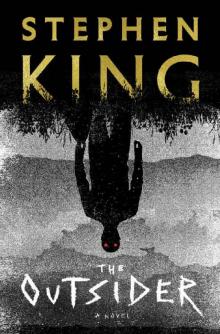 The Outsider-Stephen King
The Outsider-Stephen King Full Dark, No Stars
Full Dark, No Stars Salem's Lot
Salem's Lot Bag of Bones
Bag of Bones Desperation
Desperation End of Watch
End of Watch Wolves of the Calla
Wolves of the Calla Mr. Mercedes
Mr. Mercedes Billy Summers
Billy Summers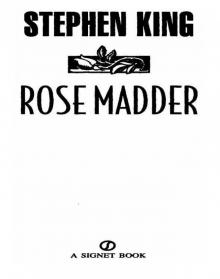 Rose Madder
Rose Madder Later
Later Gunslinger
Gunslinger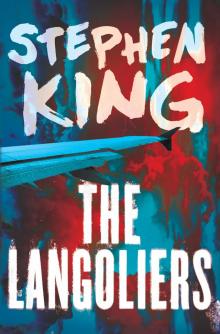 The Langoliers
The Langoliers Joyland
Joyland If It Bleeds
If It Bleeds Apt Pupil (Scribner Edition)
Apt Pupil (Scribner Edition) Flight or Fright
Flight or Fright Everything's Eventual: 14 Dark Tales
Everything's Eventual: 14 Dark Tales Night Shift
Night Shift The Dark Half
The Dark Half On Writing
On Writing The Institute
The Institute A Death
A Death The Man in the Black Suit : 4 Dark Tales
The Man in the Black Suit : 4 Dark Tales Bullet
Bullet The Dark Tower tdt-7
The Dark Tower tdt-7 Chiral Mad 3
Chiral Mad 3 Big Driver
Big Driver Stephen King: The Green Mile
Stephen King: The Green Mile Dolan's Cadillac nad-1
Dolan's Cadillac nad-1 Head Down nad-22
Head Down nad-22 The Doctor's Case
The Doctor's Case Luckey Quarter
Luckey Quarter Rage (richard bachman)
Rage (richard bachman)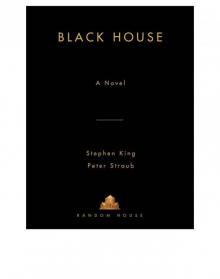 Black House js-2
Black House js-2 The Wind Through the Keyhole (Dark Tower)
The Wind Through the Keyhole (Dark Tower) Duma Key: A Novel
Duma Key: A Novel Dark Tower V, The
Dark Tower V, The Cycle of the Werewolf
Cycle of the Werewolf AUTOPSY ROOM FOUR
AUTOPSY ROOM FOUR Dark Tower VII, The (v. 7)
Dark Tower VII, The (v. 7) Gramma
Gramma Suffer the Little Children
Suffer the Little Children Chinga
Chinga Word Processor of the Gods
Word Processor of the Gods Lisey’sStory
Lisey’sStory Dark Tower V (Prologue)
Dark Tower V (Prologue) The Stand (Original Edition)
The Stand (Original Edition) Rainy Season nad-13
Rainy Season nad-13 Transgressions
Transgressions The Plant
The Plant Under the Dome: A Novel
Under the Dome: A Novel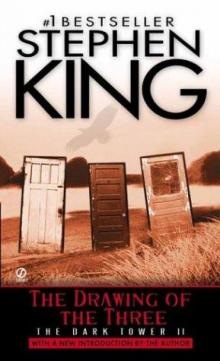 The Dark Tower II: The Drawing of the Three
The Dark Tower II: The Drawing of the Three The End of the Whole Mess:
The End of the Whole Mess: Ur
Ur The Body
The Body Uncollected Stories 2003
Uncollected Stories 2003 Chattery Teeth
Chattery Teeth The Mouse on the Mile
The Mouse on the Mile The Cat from Hell
The Cat from Hell![The Drawing of the Three [The Dark Tower II] Read online](http://i1.bookreadfree.com/i/03/25/the_drawing_of_the_three_the_dark_tower_ii_preview.jpg) The Drawing of the Three [The Dark Tower II]
The Drawing of the Three [The Dark Tower II] Cell: A Novel
Cell: A Novel Uncle Otto's Truck
Uncle Otto's Truck Song of Susannah dt-6
Song of Susannah dt-6 The Dark Tower VII
The Dark Tower VII Head Down
Head Down Sneakers
Sneakers Crouch End
Crouch End Outsider
Outsider End of Watch: A Novel (The Bill Hodges Trilogy Book 3)
End of Watch: A Novel (The Bill Hodges Trilogy Book 3) Revival: A Novel
Revival: A Novel Everything's Eventual skssc-4
Everything's Eventual skssc-4 The Colorado Kid
The Colorado Kid Sleeping Beauties: A Novel
Sleeping Beauties: A Novel The Dark Tower IV Wizard and Glass
The Dark Tower IV Wizard and Glass A Book of Horrors
A Book of Horrors Four Past Midnight - 3 - Secret Window, Secret Garden
Four Past Midnight - 3 - Secret Window, Secret Garden The House on Maple Street
The House on Maple Street Sometimes They Come Back
Sometimes They Come Back Blockade Billy
Blockade Billy Crouch End nad-17
Crouch End nad-17 Lunch at the Gotham Cafe
Lunch at the Gotham Cafe The Waste Lands dt-3
The Waste Lands dt-3 Six Stories
Six Stories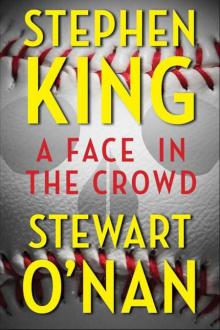 A Face in the Crowd
A Face in the Crowd Case
Case Four Past Midnight - 2 - The Langoliers
Four Past Midnight - 2 - The Langoliers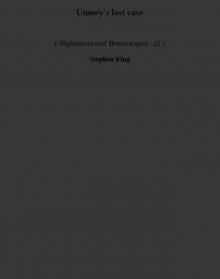 Umney's last case nad-21
Umney's last case nad-21 Survivor Type
Survivor Type Guns (Kindle Single)
Guns (Kindle Single) You Know They Got a Hell of a Band
You Know They Got a Hell of a Band The Jaunt
The Jaunt In A Half World Of Terror
In A Half World Of Terror Gwendy's Button Box
Gwendy's Button Box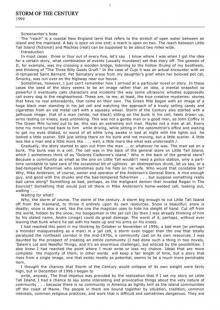 Storm of the Century
Storm of the Century The Jaunt. Travel
The Jaunt. Travel Roadwork
Roadwork Darktower 1 - The Gunslinger
Darktower 1 - The Gunslinger Faithful
Faithful The Regulators
The Regulators A Bedroom in the Wee Hours of the Morning
A Bedroom in the Wee Hours of the Morning Graveyard Shift
Graveyard Shift The Monkey
The Monkey Children of the Corn
Children of the Corn The Reploids
The Reploids 1922
1922 Darktower 2 - The Drawing of the Three
Darktower 2 - The Drawing of the Three Wizard and Glass dt-4
Wizard and Glass dt-4 Riding The Bullet
Riding The Bullet Wolves of the Calla dt-5
Wolves of the Calla dt-5 L.T.'S Theory Of Pets
L.T.'S Theory Of Pets The Langoliers fpm-1
The Langoliers fpm-1 The Two Dead Girls
The Two Dead Girls The Blue Air Compressor
The Blue Air Compressor Everything's Eventual
Everything's Eventual You, Human: An Anthology of Dark Science Fiction
You, Human: An Anthology of Dark Science Fiction The Night of The Tiger
The Night of The Tiger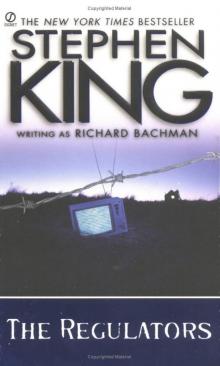 The Regulators (richard bachman)
The Regulators (richard bachman)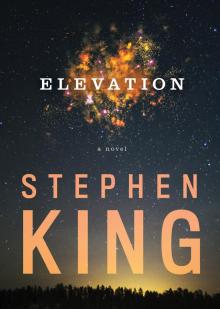 Elevation
Elevation The Road Virus Heads North
The Road Virus Heads North Good Marriage
Good Marriage Four Past Midnight - 5 - The Library Policeman
Four Past Midnight - 5 - The Library Policeman Grey Matter
Grey Matter Herman Wouk Is Still Alive
Herman Wouk Is Still Alive In the Tall Grass
In the Tall Grass Six Scary Stories
Six Scary Stories Foreward
Foreward The Crate
The Crate The wind through the keyhole adt-8
The wind through the keyhole adt-8 King, Stephen - Battleground
King, Stephen - Battleground The Wedding Gig
The Wedding Gig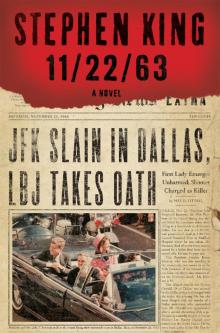 11/22/63: A Novel
11/22/63: A Novel The Long Walk
The Long Walk